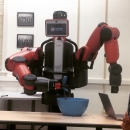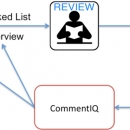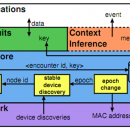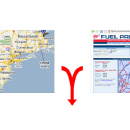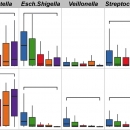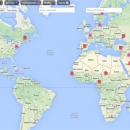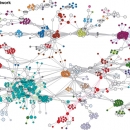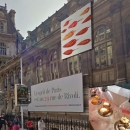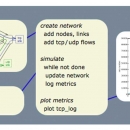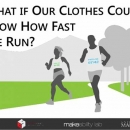Featured Research Projects
Baxters are low cost humanoid robots meant for adaptable manufacturing purposes by using long nimble arms and a suite of visual and tactile sen- sors. At the University of Maryland, re- searchers are exploring computer vision, machine learning, and artificial intelligence by training the Baxters to pour water into a moving jar, learn to cook by watching YouTube, and work with other robots.
Dynamic Software Updating (DSU) acknowledges that software systems are imperfect and works to correct this inconvenience by permitting programs to be updated while they run. Requiring no redundant hardware, this software has been tested through theoretical programming language development and practical implementation.
Mobile social applications provide new information sharing and networking opportunities based on a user’s location, activity, and set of nearby users. The underlying communication protocols for these applications must be carefully designed to not leak sensitive information —identity, movement patterns, etc.— to strangers without prior consent. EbN is a communication system which meets the needs of a wide range of mobile social apps while providing strong security guarantees.
Moderate to severe diarrhea continues to be a deadly disease, especially for children in low-income countries. Meanwhile, the pathogens causing the condition are still not entirely known. Teams of researchers are using new biological and analytical techniques to look for previously unknown sources of the illness.
Artificial Neural Networks (ANNs) are flexible learning algorithms that are used to solve problems from speech synthesis to handwriting recognition or even self-driving cars. But how ANNs generate outputs can appear to be like a black box, which limits some areas of use of ANNs. Former PhD student Thuan Huynh and his mentor Jim Reggia have developed an approach to allow us to peer inside the black box, leading to more impactful applications of ANNs.
The Laboratory for Computational Cultural Dynamics (LCCD) is a multidisciplinary research laboratory partnered with the UM Institute for Advanced Computer Studies (UMIACS). The lab focuses on the development of algorithms to automatically track open source information related to terror groups, tribes, and socio-cultural-political entities, as well as conduct behavioral analytics (including forecasting, what-if reasoning and policy formulation).
Nowadays, there is a great amount of information available and generally it is difficult to locate a website that contains local news from a city, or even a small village that you are interested in. As an example, suppose that someone is going to move to a new area and he is interested in reading the local news to find out if it is a good neighborhood. An effective way is to search for news websites that are localized for the city of interest and look for articles that are focused on the city.
Imagine a group of hikers lost in a park with no means of communication or signaling. Traditional search and rescue techniques require many man-hours and often turn up nothing. So the ability to detect the presence of interesting objects within a current highresolution image of the park would be highly desirable in such a scenario.
In this day and age, the already vast amounts of data being generated that we have to deal with are still increasing in size by the second. The ”Big Data” buzzword keeps becoming more relevant not only in computer science but in nearly all sciences, and with good reason. The more data in a specific domain increases in size the more valuable it is considered. There may exist incredibly useful insight in the data that remains untapped until analyzed. Researchers in the field of Database Systems have been on the hunt for a fast, efficient, and scalable way we can analyze very large volumes of data.
This project presents an immersive geo-spatial social media system for virtual and augmented reality environments. With the rapid growth of photo-sharing social media sites such as Flickr, Pinterest, and Instagram, geo-tagged photographs are now ubiquitous. However, the current systems for their navigation are unsatisfyingly one- or two-dimensional. In this paper, we present our prototype system, Social Street View, which renders the geo-tagged social media in its natural geo-spatial context provided by immersive maps, such as Google Street View.
People rely on and use software for many tasks, ranging from launching spacecraft, writing reports, and communicating with other people. But, because of bugs, people are not always happy with software. Sometimes, software does not do what it should and this can make users unhappy or sometimes have very serious effects on the world. Software should be a tool that people can rely on, but often it is not. The (in)famous blue screen of death came to symbolize software errors.
Timestep stochastic simulation can evaluate the performance of computer networks at a cost several orders less than packet-level simulation (the current de facto method). Unlike packet-level simulation, the network state is updated probabilistically at steps of time. This results in fast lightweight simulators, especially for high-speed networks.
We live in a connected world. As of 2014, 72% of American adults have a profile on at least one social networking site. Performance feedback devices, including the Garmin GPS watch, fitbit, and Nike+, coupled with exercise based social networks, such as MapMyRun and Strava, have created a growing online social community for runners and cyclists; however, the exercise itself is still performed individually. When compared to individual exercise, exercising as a group has been shown to provide a number of benefits including increased enjoyment and intensity.

